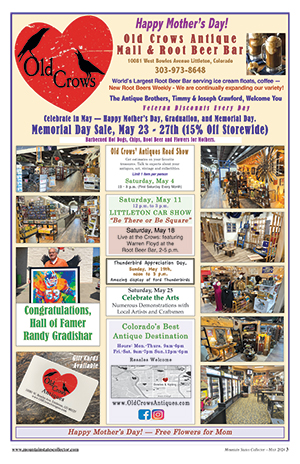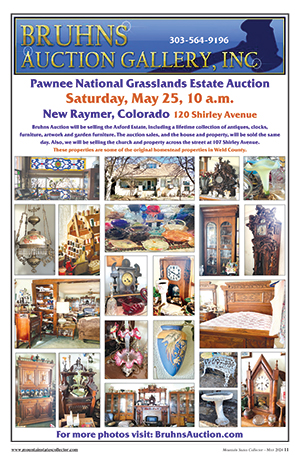 By Henry J. Pratt
By Henry J. Pratt Scores of sewing machines hum, whirl, and whine in a busy workroom, half the size of the Denver Broncos Mile High football stadium. Tables overflow with red, white and blue cloth.
A mountain of red and white stripes form like curtains on the floor, as material streams endlessly from the machines. Nearby, a woman methodically measures blue cloth covered with countless white stars.
Stars, strips and blue fields of sky billow from huge bins, drape over cutting tables and spill over on the floor. Once cut, sewn, hemmed, banded, boxed and inspected, the red, white and blue material leaves the workshop building as our Grand Old Flag.
The large, imposing red brick building, nestled in rural spring City, Pa., houses the Valley Forge Flag Co., Inc. The firm is one of four companies making and selling American flags to the U.S. Armed Forces and Government agencies around the country.
The Defense department makes many U.S. flags for Federal use at its own Government plant in Philadelphia. But it also buys U.S. flags from civilian firms like the valley Forge Flag Co., Inc., as well as the Dettra Flags in Oaks, Pa. because Uncle Sam lacks the facilities and staff to meet its total flag needs.
Varying in size, material, and construction, Old Glory is purchased in some 18 different types by the U.S. military. The largest standard flag bought is the 20 by 38 foot machine-sewn garrison flag, one that takes a fairly strong breeze to unfurl and whip around.
One of the very smallest flags is a silk-screened 4-by-5 3/4 incher used for a desk set. Prices for flags range from about $675 for garrison flag to 42 cents for one that might adorn the desk in your den.
“The way flags are made depends on how they will be used and how much the buyer wants to spend,” says Michael Liberman of the Valley Forge Co., Inc.
“The home owner has traditionally bought an inexpensive printed flag” Liberman explained. “But the U.S. military generally buys better-made flags because it flies them more often and in all kinds of weather,” he said.
Depending on its uses, Old Glory is made of different cloth. Indoor flags are made of rayon material, and are often trimmed with an attractive gold fringe.
Large outdoor-flown flags, like those you see on military posts and garrisons, are made of more weatherproof cloth, such as nylon, cotton, or wool. Such industrial-quality flags consist of sewn stripes and machine-embroidered, or sewn-on stars.
We can better understand and appreciate our Grand Old Flag when we look into its history, learn how our flag is made, and find ways we can show our respect for it and display it appropriately throughout the year. You might call all this raising our standard of flag education.
Henry Ward Beecher, one of America’s great orators of the 1800’s, said, “A thoughtful mind, when it sees a nation’s flag, sees not the flag only, but the nation itself.”
In 1814, Francis Scott Key saw not only the American flag still flying triumphantly over Fort McHenry, Md. in the dawn’s early light. Key also saw a beautiful America, still free, proud and victorious over the enemy.
On June 14, 1777, Congress resolved that “the flag of the United States be made of thirteen stripes, alternate red and white; that the Union be thirteen stars, white in a blue field, representing a new constellation.”
During the next several decades, we had official flags of various designs and shapes. All of them, however, had the three basic qualities Congress specified—stars, stripes and red, white and blue colors.
A legend, now disputed, says that Betsy Ross hand-sewed the first American flag in her home in Philadelphia. Now, researchers say it’s doubtful Betsy sewed the first Stars and Stripes. But it’s proved she did make flags for a growing Pennsylvania state navy.
Another legend says that Francis Hopkinson, a signer of the Declaration of Independence, made our first flag. In a letter to Congress in 1780, Hopkinson listed several services he had performed for the country. His invoice letter claimed he made several devices and “the flag of the United States of America.”
In more than 200 years since, U.S. flag making has evolved from the one-person hand sewer of the Betsy Ross—Francis Hopkinson legends to an efficient assembly line operation of firms like the Valley Forge Flag Co., Inc. and other flag makers. Most, but not all, our flags—as you shall soon see—have been machine made since sewing machines were invented around 1850.
What are the job titles of the men and women, who make our flags? Most of our flag makers are called dyers, cutters, strippers, binders, packers, inspectors, and shippers. Personal headphones and stereo headsets provide the flag makers some entertainment throughout their workday, as well as block out the almost-constant machine noise.
Old Glories, ready for shipment to most any spot around the globe, aren’t folded in the tringular shape so familiar to soldiers, sailors, airmen and others, who ever raised and lowered a post, station or shipborne flag. That would take up too much room, so most flags are folded squarely, or in rectangular fashion for shipment.
Prior to Government purchase, an inspector personally checks each major shipment to ensure it meets Federal specifications on size, color and placement of stars in the field of blue. The flag fabric itself has some 30 different quality-control and inspection checkpoints.
Liberman explains his company’s flags fly all over the world, and were even carried ashore by U.S. Armed Forces during the 1944 Normandy invasion. In Liberman’s office hangs a framed letter from a member of President Kennedy’s honor guard identifying a Valley Forge company flag that covered the assassinated president’s coffin while it lay in the U.S. Capitol rotunda.
Some of our flags are handmade. Today, at the Defense Personnel Support Center in south Philadelphia, about 25 employees produce the thousands of special flags, pennants and streamers ordered each year. They include few-of-a-kind flags displayed and flown in the armed services, the White House, cabinet-member offices, ROTC units and by foreign nations.
It wouldn’t pay to have these special flags and pennants produced by commercial firms because many such Old Glories are few-of-a-kind. These take much longer to make and get ready to ship and unfurl.
Most of the special flags, like the official Army versions and those flown in battalions, regiments and divisions—are silk-screened emblems sewn to their backgrounds. A very few, like the Chief of Staff’s flag and certain military command flags, are hand-embroidered.
Perhaps you’ve noticed our President’s flag consists of the presidential seal, the American bald eagle holding an olive branch in one claw and arrows in the other, and is surrounded by 50 white stars.
The hand embroiderers are isolated from the rest of the flag factory’s hustle, bustle and noise. Women sit at wooden frames patiently pushing and pulling needles and thread through tightly-stretched, gleaming and glorious fabric. The various designs are stenciled on the flag background’s cloth.
A Personnel Support Center flag hand embroiderer for about 15 years, Rose Clavin says her “work is challenging, but enjoyable.” She adds, “the beauty of the color shades—a hand embroidered flag looks like an oil painting.”
Aspiring hand embroiderers are required to attend a six-month training course to teach them to make the sewing on their special Old Glories look, indeed, like a painting. But the Center prefers to hire experienced embroiderers when available.
One person in the Betsy-Ross tradition can hand embroider a presidential flag in about 45 days, while a Chief of Staff’s flag takes 60 days or more to finish. Each flag is valued at about $5,000.
An 1818 law required a star would thereafter be added on the Fourth of July after a new state was admitted to the Union. It was a Navy Captain, Samuel Chester Reid, who suggested that practical change for the flag of a growing United States.
President William Howard Taft in 1912 issued an executive order stating the flag’s official proportions, as well as the precise arrangement of the stars. As America ushered in the Twentieth Century, the popularity and devotion to the national flag continued to grow.
In 1942, Congress brought together all existing flag rules, regulations and customs. Then, it developed and passed a joint resolution on the display and use of the flag. By another executive order of President Eisenhower in 1959, our present flag with 50 stars became the official flag of the U.S.
Today, when we see our flag raised to open a baseball game or other athletic or civic event, we thrill as we stand at attention and sing, “The Star Spangled Banner.” There’s a rebirth of allegiance and patriotism now afoot in America, and many believe it begins with a deeper understanding, love and respect for our flag.
She’s the “Stars and Stripes Forever” for some: “Old Glory” and “Our Grand Old Flag” for others. She’s been in every war we’ve fought; she’s journeyed with climbers to the top of Mount Everest; and been carried by explorers of the Arctic, Antarctica and the Moon.
We pledge allegiance to her; we cover our fallen veterans with her when they die; and we enthusiastically salute her in hometown parades across the USA. Indeed, from Francis Scott Key in 1814 to an ever-growing army of patriotic Americans in the 1980’s, Our Grand Old Flag is an inspiring symbol of freedom and of our nation itself.

















Follow Us